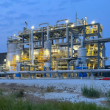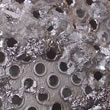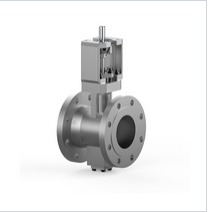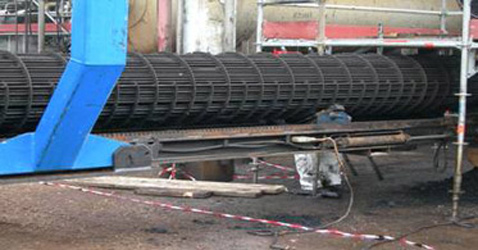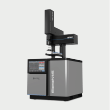Question
-
In building the petrochemical value chain, how much further can we see the FCC unit being used to increase olefins production with the wide range of feedstocks currently available, including waste plastics-derived pyrolysis oil?
Mar-2023
Answers
-
Joseph Gentry, GTC Vorro Technology, jgentry@gtcvorro.com
FCC gasoline can be readily converted into aromatics and olefins, using the BTX Direct(TM) process, which segregates the sulfur plus aromatics from the olefin-rich nonaromatic components. The aromatics portion is desulfurized in a conventional HDS operation, while the olefin-rich fraction can be recycled to the FCC for increased propylene production. This configuration is an extension of recycling the light naphtha, which is constrained on account of aromatics that are not suitable for recycle. The entire FCC naphtha can be recycled to extinction, once the aromatics are removed.
After HDS of the aromatics fraction, these components can be directed to BTX production.
The BTX Direct(TM) process is the most effective method for producing petrochemicals from FCC gasoline, regardless of the cracking severity.
Apr-2023
-
Marcio Wagner da Silva, Petrobras, marciows@petrobras.com.br
Considering the growing demand by petrochemicals and the operational flexibility of the FCC units is expected than the FCC technologies will be in the core of petrochemical integration efforts from the refiners.
Beyond the traditional actions to maximize the olefins yield in conventional FCC units like higher operating temperature, higher Cat/Oil ratios, and catalyst additives (ZSM-5), is expected growing investments in high severity and petrochemical FCC units. There is some trends that will demand research and development involving FCC units like the renewables co-processing and the use of pyrolysis oil from plastics recycling plants as feed of FCC units which requires a deep analysis regarding the effect on the production profile of the processing unit as well as the catalyst deactivation rate. Regarding the renewables co-processing, the use of ethanol as feed to FCC units aiming to improve the yield of ethylene is one of the most interesting trend which will demand analysis by refiners and technology developers in the next years, in my point of view.
Mar-2023
-
Sanjay Bhargava, KBC (A Yokogawa Company), Sanjay.bhargava@kbc.global
FCC gasoline is a major component of refinery-produced gasoline. Therefore, minimising FCC gasoline production can be an important step for oil refineries to reduce Scope 3 emissions. One way to reduce FCC gasoline is to convert it to propylene, as the demand for propylene is expected to increase significantly. Therefore, FCCs could become an additional source of propylene to meet the demand.
Currently, FCCs produce about 4-8 wt% propylene on feed and have the potential to produce over 15 wt%. As a result, FCCs present the industry with a significant potential to produce more propylene while, again, reducing Scope 3 emissions. Olefin production in FCCs can be increased by several methods.
Some of these include:
• Operational changes with higher severities (higher riser outlet temperatures)
• Naphtha injection or FCC naphtha recycle
• Catalyst modifications to more olefin selective catalysts (such as smaller cell size with lower Al2O3)
•· Catalyst additives (C3= selective ZSM-5)
• Mechanical changes with available licensor technologies to accommodate higher severities.Waste-derived pyrolysis oil can also serve as a feedstock to FCCs. These include olefinic and aromatic-free feedstocks for FCCs and will produce naphtha and olefins in FCCs. However, the contaminants in pyrolysis oil, such as nitrogen, oxygen, chlorides, iron, and calcium, are significantly higher in pyrolysis oil than typical FCC feedstocks and, therefore, need pretreatment for contaminants before consideration as an FCC feedstock. If left untreated, the contaminants will cause increased corrosion and fouling in the downstream equipment and a significant increase in catalyst consumption due to catalyst poisoning.
More environmentally friendly pathways that produce lower CO2 emissions are available for olefin production, such as waste plastics-derived pyrolysis oil facilities. However, each alternative has its pros and cons. For example, pyrolysis oil conversion to olefins requires significant electrical energy that may not be all green and has its own pollution problems from ash and other materials. Further, these facilities are expensive to set up, operate, and maintain. KBC believes the energy transition will take time. Thus, FCCs will play a significant role in the C3= olefin production market while co-existing with alternative pathways.
Mar-2023
-
Mel Larson, Becht, mlarson@becht.com
The answer is less about ‘how much further’ and instead shifting the fuels plants only, if location allows, to a more sustainable petrochemical feedstock provider. The FCC currently plays a dual role as both fuels and petrochemical provider. As transportation fuel demand declines, both the reformer and FCC operating modes will shift directionally to meet BTX, styrene, and olefin market demand.
The next step, which is already in deep R&D analysis, is how to adjust the FCC to more of a ‘crude-to-chemical’ engine in a ‘single’ unit as compared to other technologies. Future FCC operations may include more recycling of product back through additional catalytic/thermal processing steps than currently practised. Additionally, if the rules change, the FCC will be the location where synthetic oils can be cracked with the potential addition of partial burn and hydrogen for further circular unit value. This last point may be decades off. However, the system and infrastructure are already present, with selected additions to move in this direction.
Mar-2023








